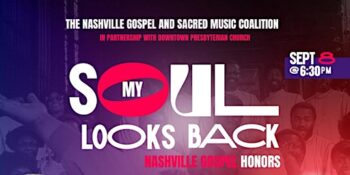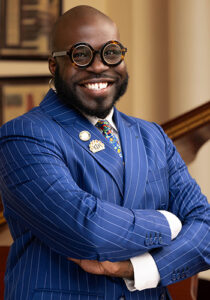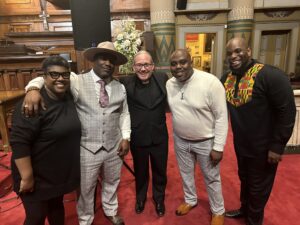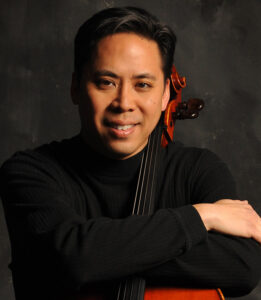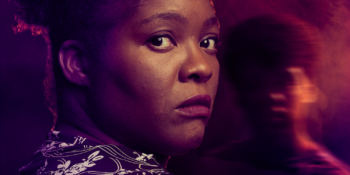From the Nashville Film Festival
We Can Be Heroes: Celebrating Difference
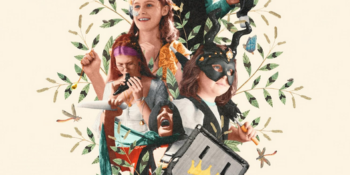
In the mid-60s, my brothers were diagnosed as autistic. It took awhile, because they were beautiful twin babies, perfectly healthy. Unlike Downs Syndrome, there are often no outer indications of autism. But after a year when they weren’t talking, the guessing began. Neurodivergence was not yet a common concept; in fact, the term wasn’t created until 1998. Doctors had no idea what to do. But Mom, a skilled elementary school teacher, was also a realist who could deal with any child, however or whoever they were. So our family had to find our own way, recognize their differences, and seek activities that would enrich their abilities. Our journey is what drew me to We Can Be Heroes.
Billed as a documentary on “neurodivergent, queer, and self-proclaimed ‘nerdy’ teenagers,” We Can Be Heroes traces the journey of the teens attending Camp Wayfinder, a live-action role playing (LARP) experience in upstate New York. Co-produced and co-directed by Carina Mia Wong and Alex Simmons, it premiered at the 2024 SXSW Film Festival. This 1 hr, 26 min film was released by Concordia Studios of Muck Media.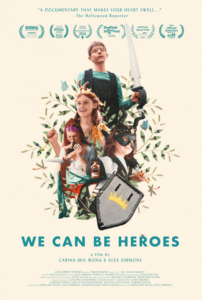
The one-week camp consists of a few days of introduction, two days of medieval/renaissance-style role-playing, and a final day of assessing the experience. Considered as a standard narrative, the three main characters are Cloud, age 11 (White Plains NY); Dexter, 15 (Manhattan); and Abby, 17 (Sacramento), while other campers and camp counselors are supporting cast.
During the intro days, campers get to know one another, choose the pronouns for their name-tags, and are reminded to respect personal boundaries. Some have already learned this lesson. Two bunkmates, for example, are grateful to find that each has been diagnosed with a variant of autism, grateful to spend time with someone who shares their experiences. A telling moment occurs when one says to the other, “Are you okay with hugs?” (Physical contact is often an overt issue with autistic people.) The other said it was okay—and they hugged. I remembered teaching my brothers to hug.
Campers are also kindly, but firmly, told that bullying will not be tolerated. Then they are introduced to “The Last Green,” a story outline created by counselors Clare and Claire. In the story, a verdant land of magical creatures has always been surrounded by a void. The void is simply a fact of life, not in any way feared until it begins to shrink inwards squeezing the green into a smaller and smaller space. The inhabitants must decide whether to try to flee, fight, or accept fate. Training for role-playing interactions to come, they learn: enjoyment is key, cooperation is vital, and accepting gains or losses with grace is desired. Most of the story will be improvised, so campers choose a character that represents who they are— or who they’d like to be.
During two pandemic years, prior to camp, Cloud had been to three different schools. Red Flag. With a college-level vocabulary and MIT-level arrogance Cloud might remind you of a proto-Sheldon Cooper. Obsessed with swordplay and identifying with Darth Vader, Cloud is clearly threatened by any scenario where the top position in the social hierarchy is held by anyone else. This cherubic-looking child envisions a character “too cool for their world [where] everyone is beneath them.”
Dexter, a lanky teen with an upper-class British accent, serves as narrator. Having been home-schooled his entire life, this is only the second time he’d sleep away from his parents. It’s not hard to imagine this aspiring writer turning into an awkwardly charming young man. During the camp, his anxieties about ticks and his crush on a girl he had met at camp last year dissipate. As his alter ego, he creates a good-hearted wizard whose spells never quite work out, what would be called a “squib” in Harry-Potter lore.
Abby is the most poignant character in the film. The victim of two potentially deadly gastric conditions, it isn’t clear, initially, that the camp will be able to accommodate her, so it was a joy to see her there. With humor, she explains her occasional need for a feeding tube and the machinery that runs it. She instructs fellow campers on how to approach her when she’s wearing it and how to avoid harming it when it’s charging. It was moving that the LARP character she chose would be a healer.
Throughout the film, the improv environment and costuming redolent of a medieval or renaissance fair is periodically accompanied by Marin Marais’ baroque masterpiece “Les Folies d’Espagne,” played on the historic relative of the cello, the viola da gamba. Although la folia is a Spanish dance, folies is also French for quirkiness or mania. Irony?
The cinematography sometimes effectively spotlights close-up shots like Dexter’ awkward foot movements as he discusses the girl he likes. But aerial shots of the camp’s Hudson Valley green spaces work metaphorically as a different, real, yet magical world where these special campers have a whole universe open to be themselves.
This is when another red flag concerning Cloud joins those posed by the three schools in two years. Counselors and campers are clearly troubled that this child, whose foam sword has had to be taken away after the first day of roleplay, wants to be either the leader of the clan, or to form a “death cult” where cult members could be convinced to commit suicide by walking into the void. Later, after an unnamed altercation, Cloud is removed from the camp and sent to a “therapeutic boarding school.”
Dexter, Abby, et al, however, grow in happy confidence. Abby finds the yelling and falling to the ground and healing the wounded in battle scenes “cathartic”; Miranda finds it “liberating.” Considering Abby’s health challenges and Miranda’s extreme shyness, this is heartening. Jud, head counselor, remembers how much the camp had done for him as a lonely gay teen. He is determined to carry on that legacy. Claire, remembers how costumes so seldom fit her, so she chooses a wide variety of sizes, determined that no camper should ever feel body-shamed. Lynsey, the only minority counselor, admires the campers’ courage in dealing with their differences, determined to deal with her own fear of insects in the wild.
After the two days of role play are over, the campers lie on the grass with their eyes closed as counselors move from camper to camper whispering, “Can I appreciate you?” Once the camper consents, a counselor kneels and gently praises specific areas of growth they’ve seen during the week. To see Dexter’s anxiety melt away as a gratified smile graces his young face is heart-rending. In the end credits, we find that he goes on to write the third volume of his stalled animé-style Atlantis trilogy. Abby goes on to college, majoring in graphic design. Clearly this camp recognizes and celebrates their differences, while enriching their lives. The filmmakers have told a story of accepting difference that we all need to hear. I wish it had been available decades ago.
From the Nashville Film Festival
A Man Called Hurt: The Life and Music of Mississippi John Hurt
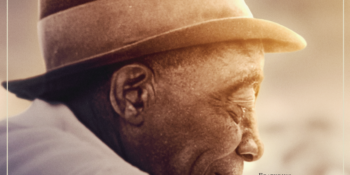
A Man Called Hurt: The Life and Music of Mississippi John Hurt begins as a comfortably muted scene in an old-time country home in Avalon, Mississippi. “Frankie” is playing on the crank-up Victrola. The film ends with “Since I Laid my Burden Down” playing in the background as the Victrola image fades.
In this 2024 release by Draft Films, a Tennessee film company, in conjunction with the Mississippi John Hurt Foundation, Jamison Stalsworth and Alex Oliver have created a lovingly rendered portrait of the life and career of Mississippi John Hurt, a soft-spoken bluesman from the Mississippi Delta. They are known for their short film Love, Trails, and Dinosaurs, a 2019 documentary of the 900-mile Smoky Mountain hiking adventure of a mother and her autistic son. In that film, Oliver served as director, while Stalsworth was one of the producers.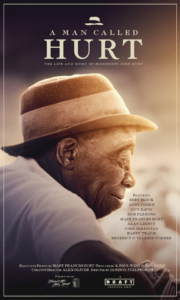
In “A Man Called Hurt,” both took on multiple roles as direct, editor, and cinematographer (Stalsworth), and creative director and cinematographer (Oliver). Additionally both were active camera operators alongside Ronald Levy. They achieved this moving tribute working with Hurt’s granddaughter Mary Frances Hurt, executive director of the Hurt Foundation
Like most country blues musicians, John Smith Hurt was self-taught. “I shall never forget,” he delicately reminisced about first picking up the guitar of a family friend at the age of eight. Four years earlier, Hurt, the grandson of enslaved people had lost his father to the Jim Crow-era scourge of lynching. He would later lose his only daughter to the gun of an abusive husband. His promising music career with Okeh Records was stopped in its tracks by the Great Depression. Despite all this tragedy and trauma, when Greenwich Village blues devotees sought him out in the folk-revival era of the 1960s, they found a warm, gentle man with a talent that had been preserved free of bitterness.
How was this possible? Benedict Turner, of the Piedmont Bluz Acoustic Duo, approaches the truth when he notes that Hurt’s “gentle approach to storytelling came across as if he was talking to his family sitting on the porch, just so lovingly.” Don Flemons, a folk musician self-billed as “The American Songster” further adds, “Even though he has sort of a sunny disposition in the way that he picks them, he’s still telling some hard truths…” This certainly applies at eyebrow-raising levels in “Ain’t No Tellin’” where he good-naturedly warns his friend that a good girl they know “might shoot you, might cut and starve you too, ain’t no tellin’ what she might do.”

Hurt’s granddaughter confirmed both points of view. As she grew up, she recalls “Daddy John” playing for his children and grandchildren under the mulberry tree on Sundays. Later, after this “PG” set, she learned that he’d play more “mature” music for the grownups. Raised by a hard-working mother, she also adds the intriguing point that Hurt often took a confident female perspective in songs like “I’m Satisfied.” The overall picture was one of personal dedication to family shown in and through his music.
The beauty of the music is reflected in the film’s cinematography, transitioning subtly from aerial shots of old-growth forests, cornfields, and swamplands of Mississippi, to intimate shots of family photos and personal objects in the small museum his granddaughter preserved for over two decades. Delicately interspersed among these images were two important features of the film, audio and video clips from Hurt’s performances, and personal vignettes from a varied roster of talented musicians, all devoted to Hurt and his music.
That roster includes Pete Seeger radio-interviewing Hurt, and John Sebastian, founder and lead singer for Sixties pop group, The Lovin’ Spoonful. He’d met Hurt as a teenager and performed harmonica with him at folk festivals, eventually taking his group’s name from one of Hurt’s songs. Unlike many film documentaries about music, the directors played what we in the South might call a “healthy portion” or a “gracious plenty” of each song.
The music and images complemented one another as the narration traced the influence of his unique finger-picking style. He used his thumb alternating strings for a bass line, while picking his melody with the index and middle fingers. This is in keeping with the Mississippi Delta blues style where the soft voice plays simultaneously with, or in alternation with, the guitar melody. But there is also a flavor of East Tennessee Piedmont blues with its hopping bass line and the syncopated melodies that were the grandchildren of ragtime.
Granddaughter Mary Frances’ tales of the difficulties in maintaining his museum are thankfully followed, post-credits, with Hurt’s cute alphabet song, “Chicken.” Then, with white font on a coal-black background, the filmmakers announce thrilling news. In early 2024, the museum was named a “historical landmark” by the National Register of Historic Places.
However, the tragedy that was an ongoing feature of Hurt’s life would not be denied. The day following this great honor, the museum burnt to the ground. Authorities have yet to determine a cause for why a museum that had stood undamaged for over twenty years, should suddenly catch fire. This gut-punch somehow seemed of a piece with Hurt’s life and this film—triumph, tragedy, love, loss. But his music survives.
Plans are in place to rebuild the museum. To help, contact: www.msjohnhurtfoundation.org
Clue
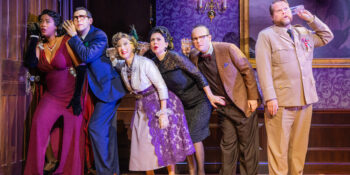
I have to admit from the start that I’m biased in favor of this play: it’s a faithful and spirited adaptation of the 1985 cult classic Clue. I grew up watching the black comedy on DVD and was excited when I saw the play was coming to TPAC. The film was made when producer Debra Hill wanted to make a comedy-mystery based off the board game Clue, and acquired the rights from the Parker Brothers. It took her several years to find a studio, director, and screenwriter. Jonathan Lynn (who directed My Cousin Vinny), a British playwright and director, ended up writing and directing the film. In 2017 he adapted the screenplay for the stage, and now it’s on a national tour.
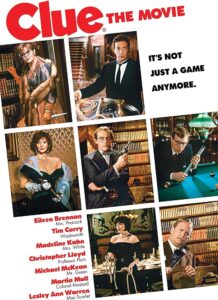
The plot of Clue is ridiculous and delightful. It’s the 1950’s, at the height of the McCarthy hearings. Six guests arrive at an old mansion and are greeted by Wadsworth, the butler. They go by pseudonyms (Colonel Mustard, Miss Scarlet, etc.) and as they speak with each other it is clear that they don’t know who their host Mr. Boddy is. As they wait for him to arrive, they all attempt to discover more about each other without giving away anything about themselves. Finally Wadsworth explains that they are all blackmail victims, and now is their chance to throw off Mr. Boddy’s oppression by refusing to pay him anymore and turning him in when the police arrive in an hour. But when Mr. Boddy arrives he gives each guest a gift: the classic weapons from the board game. He tells them that if they kill Wadsworth for him, then he’ll stop blackmailing them. Then he turns off the light. When the light is turned back on there is a dead body, but it isn’t Wadsworth’s. This proves to be only the first murder of the evening and the group scrambles to discover what’s going on while their time slowly runs out.
The entire play takes place at Boddy Manor. The set is excellent, an archetypical creepy mansion. The main stage is a large entry hall, with double front doors at the center. Along the sides of the hall are doors to adjoining rooms. These rooms can be simple doorways or they can pivot open to reveal a room: the library, kitchen, or lounge. Much of the film involves running around the mansion from murder to murder, and exploring the building in pairs. I was curious how they would make this work on stage. They do it cleverly: with dramatic hurried music they comically run in place as the set and lighting change. Farcical paired choreography establishes their search of the building.
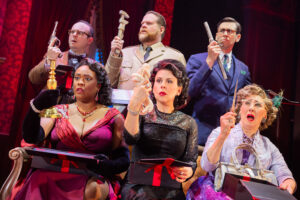
The original film was released in theaters with three separate endings, hypothetically meaning people would see the film three different times (this gimmick didn’t seem to succeed). When Clue was released on home video, the three endings were all included sequentially, with two being shown as possibilities but the third ending being the real one. The play includes multiple different endings and switches between them in a goofy, “rewound” manner, until the final ending. I won’t give any spoilers, but I will say that the final line of the play is identical to the final line of the film.
Clue is roughly 90 minutes with no intermission, almost the same length as the film, and the perfect length for a comedy. The humor and manic speed of witty dialogue are maintained in the play, made more impressive by each actor’s memory and comic timing. This play is an ensemble endeavor with jokes and plot points constantly bouncing from character to character.

Everyone is vibrant and ridiculous in their own way. One difficulty in an adaptation is to avoid doing an impression of the original actor without losing the beloved character’s identity. The cast does this well, maintaining the personalities while bringing something of their own. I attended the show Tuesday night, when understudy James Taylor Odom appeared as Wadsworth. He speaks with a similar accent and breathlessness as Tim Curry in the film, but I think breathlessness cannot be avoided in his role: Wadsworth has more lines than anyone else and each of his rapid lines matter, moving the plot and the dialogue of everyone else. Odom nails the role.
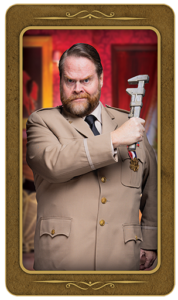
The character with the most new lines is Colonel Mustard. He’s a complete idiot and constantly misunderstands people, making delightful puns. If there’s something I love in a comedy, it’s puns and idiots, and John Treacy Egan plays him fantastically. An unexpected new facet is in Mr. Green, played by John Shartzer, who surprised us all with his hilarious and unexpected athleticism.
Jen Caprio’s costumes are great, fitting the stereotypes of the characters and helping accentuate their mannerisms. Each person looks so different that it helps the audience keep track of the characters. John Morris’s dramatic strings, harpsichord, and radio-drama organ music of the film is retained, altered slightly to become the play’s incidental music. The music is so good and ridiculous and threatening all at once, making it perfect for this farce.
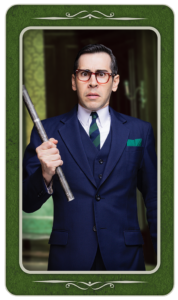
Clue has far fewer innuendos than the film, making it a good choice for parents with older kids who can enjoy witty dialogue and dark humor. It also was over by 9:00, making it convenient for anyone who has a drive ahead of them. While I’m far too familiar with the film to have been surprised more than a few times during the play, the audience roared with laughter at every joke. I don’t know if they had also seen the movie, but whether you have or haven’t, you’re guaranteed a good time.
Clue will be at TPAC’s Jackson Hall through September 15. For tickets and more information see Clue | TPAC®, and for more information about the tour see Clue – A New Comedy.
As You Like It

The Nashville Shakespeare Festival performed As You Like It for their very first show in 1988. As Executive Artistic Director Denice Hicks says in her program notes, she was in the audience and “fell in love with the spirited, free, outdoor production… and now I will close out my tenure with the same romantic musical comedy that captured my heart that lifetime ago.”
Shakespeare’s plays have survived the English Civil War, the American Revolution, the American Civil War, and two World Wars (just to name a few). The joyful timelessness of As You Like It reminds us that there is more to life than stressful election years, and that laughter and comedy often reveal as many profound truths about human nature as tragedies do.

This play is a pastoral comedy Shakespeare probably wrote in 1599, around the same time as Julius Caesar. While I’m a fan of “an honorable man,” As You Like It is a lot more fun, which is probably why it’s one of his most frequently performed comedies. Like many of his comedies, this one involves disguise: after the usurping Duke Frederick banishes his daughter’s Celia’s best friend Rosalind, the two young women run away together, Rosalind disguised as a man. They hide in the forest of Arden, to which Orlando, the man Rosalind is in love with, has also fled to avoid being killed by his brother. Confusion, love, and flirting abounds and it all ends happily. This play has probably one of the most straightforward Shakespeare plots and this performance is not much longer than two hours, including the fifteen-minute intermission.
I attended the September 7th performance at OneC1TY, which was a Saturday night with perfect weather: 70 degrees when we arrived, there was a light breeze and I was able to wear a jacket comfortably for the duration of the performance (always check the forecast before attending and bring a hoodie). My friends and I sat at the back, on the low metal bleachers which provide a view over the lawn chairs and blankets of the audience closer to the stage. We forgot to bring any sort of cushion, so if you’re going to sit on the bleachers, plan accordingly.
There are food trucks and a well-stocked concession stand as well as drinks. We saw several people with the Yazoo Shake’s Beer, a delicious lager made specifically for the Nashville Shakespeare Festival. The bathrooms, or “Posh Privies,” are as convenient, clean, and posh as ever. Convenient and free garage parking is directly beside the venue, with clear signs directing drivers where to go.
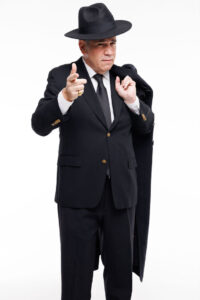
Director Cammy Harris’s choice to set the play in 1950’s America is fun, providing for a variety of costumes and for a great musical beginning. The tyrant Duke Frederick sings a number on stage with a cigarette in hand, the image of a mobster crooner, while Celia and Rosalind sing backup. The mobster vibes mesh with his illegitimate power and this is added to by a bit of comedy: an actress planted in the audience pretends to film the set on her phone and is chased off by some of his thugs. What a smooth way to combine the character, the setting, and an audience reminder all in one!
Music is used frequently in this production, more diegetic than not. Often it is used to introduce a new scene, with the character appearing on stage with an acoustic guitar. One such moment gave Orlando (Gerold Oliver) a chance to demonstrate his improv skills. He came down the aisle singing and playing just as a woman attempted to dart out from her seat. Without halting his stride Oliver casually said “How ya doing” as she passed him, making everyone laugh.
As You Like It doesn’t restrict its comedy to witty dialogue but also has action: the hero Orlando fights an established wrestler in a match at Duke Frederick’s court. That scene serves as the moment that he and Rosalind fall in love at first sight, but it is also a moment for Josh Kiev to shine as his opponent Charles. Kiev hams the moment up delightfully, posturing like he’s in the WWE. Since stage wrestling between actors wearing fragile microphones already restricts the realism of physical combat, it’s clever to make the match as staged as possible.
My only critique of the show is that Duke Senior is played by a woman (Denice Hicks), but they don’t change her title to Duchess, despite referring to the character as “mother” and “she.” Actors playing characters of another gender has always been part of the Shakespearean tradition and is common for the Nashville Shakespeare Festival. Here I just wish they had done it more consistently: since there’s already another duke and they talk about the two in relation to each other, the inconsistent gendering of the role makes it more confusing at times than it needs to be.
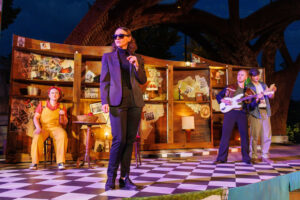
Bethany Dinkel’s costumes are great, using looks from a variety of 1950’s social strata. One costume adds a lot of humor to the character: Jacques is a comic relief, a pretentious pseudo-intellectual in the banished Duke Senior’s court. Dinkel chose a beatnik outfit for this character, making a host of comic mannerisms available to Elyse Dawson’s portrayal.
The cast is excellent and has great chemistry with each other, especially Gerold Oliver (Orlando) and Dani Grace Nissen (Rosalind). They are charming and have such hopeful energy that you don’t even mind them falling in love at first sight, and their scenes of extensive flirting are very cute. Kate Drury does a fantastic job as the best friend Celia, teasing and supporting Rosalind as only a close friend of years could. Galen Fott owns the mobster singer role of Duke Frederick, giving him a layer of show business grime that adds to the character. Denice Hicks is authentic and likeable as Duke Senior, cheerful and uncomplaining in her rural banishment.

AG Williams gets a lot of laughs as Touchstone, and even small roles like that of Adam (played by Alan Lee) and Charles (the wrestler mentioned above, played by Josh Kiev) shine with moral strength and ostentatious ego, respectively.
The happy ending is given oomph with a musical number sung by the whole cast, The Monkees’ “I’m a Believer.” The night I attended a large part of the crowd joined in the dancing, giving us all a burst of energy.
This season’s Summer Shakespeare is Denice Hicks’ final as Executive Artistic Director for the Nashville Shakespeare Festival, after decades of service developing it into what it is today. To quote As You Like It,
“All the world’s a stage, And all the men and women merely players;They have their exits and their entrances; And one man in his time plays many parts…”
We look forward to seeing what future roles Denice Hicks will play in Nashville’s theater community. Thank you for more than thirty years of enriching our local arts scene!
The Nashville Shakespeare Company will continue their Summer Shakespeare at OneC1TY and Franklin’s Academy Park until September 29. For more information, see Summer Shakespeare 2024.
Next to Normal: a Compelling Depiction of Mental Illness
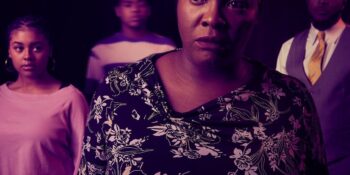
On September 5th, I was able to see the final dress rehearsal of Street Theatre Company’s production of the musical Next to Normal. In the intimate black box of the Barbershop Theater we sat only a few feet away from the six actors, able to witness every nuanced facial expression. Before the play began, the director, Alicia Haymer, spoke for a moment and reminded us that it was perfectly alright to emote and that actors live off of feedback. Thank goodness for that, because I cried (and laughed) multiple times during the performance.
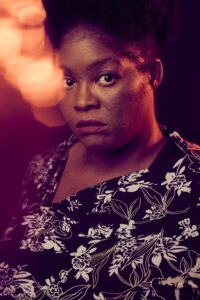
Next to Normal follows the struggle of a mother and wife, Diana Goodman (Jennifer Whitcomb-Oliva), with mental illness and the effect of the illness on her whole family. In the second act, Diana undergoes electroconvulsive therapy (ECT) in hopes of getting better. It helps in some ways, but also makes things worse as she suffers memory loss after the procedure.
Before I go any further I want to warn you that there will be major spoilers in this review. If you don’t want spoilers and are just curious whether you should see the play, here is your answer: go see the play.
Next to Normal begins with Diana waiting up for her son who comes home in the middle of the night. She sings, “It’s the seventh night I’ve waited up ‘til morning imagining the ways you might have died.” It’s clear as the play goes on that she’s suffering with mental illness and has a lot of anxieties. However it isn’t until about halfway through the first act that the audience realizes just how serious her illness is when it is revealed that her son, Gabe (Jalen Walker), is a delusion, and that he died 17 years ago as a baby. This traumatic death greatly contributed to her mental illness.
The play does a phenomenal job of showing the audience the perspectives and feelings of each character. You empathize with Diana who is still struggling with her grief and mental illness, but you also empathize with her husband, Dan (Leonard Ledford III), who is trying so hard to hold the family together. When Diana sings that Dan doesn’t know how she feels, he pleads back with her, “Tell me what to do. Tell me who to be, so I can see what you see.”
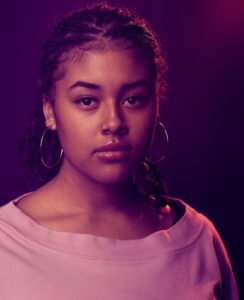
And then there’s their daughter, Natalie (Ella Claybrooks) who constantly has to put her own needs aside because her mother is still fixated on the death of her brother. She’s so used to being on the outside that she’s completely taken aback when Henry (Jayden Murphy), a boy at school, notices her and tells her that he’s noticed her for years. At one point, Natalie sings a song called “Superboy and the Invisible Girl,” in which she describes how her mother almost idolizes her dead brother while she is unseen in her own house. Diana’s gut-wrenching response to this is “you know I love you. I love you as much as I can.” After Diana attempts suicide, her doctor recommends ECT and gets consent from both Diana and Dan. This results in memory loss that’s so acute, Diana doesn’t remember her home, Natalie, her life with Dan, or Gabe. She appears to be doing better mentally until she begins to slowly recover her memories and has a breakdown as she experiences the pain of losing Gabe all over again. The play ends in a way that feels very real: there’s no clear resolution, but there is hope for the future. Although the family will never be normal, perhaps they will be something next to normal.
Diana is a difficult role to play as she really runs the gambit of emotions and mental states. Whitcomb-Oliva is phenomenal as her character leaps from mania, to anger, to sorrow, and finally to hope. The pain in her voice when she remembers Gabe’s death in the song “How Could I Ever Forget,” is nothing short of heartbreaking. Even my stoic husband shed a tear!

Dan is my favorite character, and Ledford III gave me goosebumps in some of his songs. After Diana’s suicide attempt, Dan is cleaning up the blood that she’s left on the ground and sings “I’ve Been,” a song about how hard he’s trying, how he doesn’t know how to help her, and how he doesn’t know how he could be alone. Ledford III’s voice is strong, and yet he has a beautiful fragility to his tone, as though he could break at any moment.
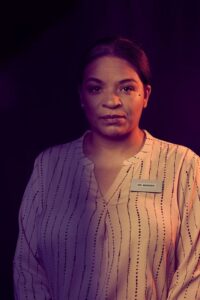
DaJuana Hammonds is perfectly cast as Dr. Madden. In the original script, this character is played by a man, but I quite liked that it is played by a woman in this production. The portrayal of this character can change how the audience is meant to view therapy and mental health professionals. Hammonds’ expressions and tone of voice are perfect for a Psychiatrist. She immediately gained my trust and respect. In fact, I liked her so much that I was shocked when she recommended ECT (although ECT is still practiced and has helped many people, it really does seem like a dismaying proposal at first). I would be fascinated to see how the whole play would change if this character was played with a cold and detached manner.
The characters Gabe, Natalie, and Henry, are all teenagers, but I was surprised at just how young the actors were; Walker (who plays Gabe) is a senior in high school. However, if I was worried how these young actors would stand-up to the more seasoned actors, I had nothing to worry about. Each one commands the stage in their own way. Walker is perfectly cast for Gabe, with a voice that is purely angelic. I loved the juxtaposition of his sweet voice along with the fact that every time he appears on stage, the actors are experiencing moments of extreme emotion or distress.
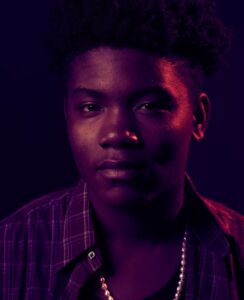
Murphy as Henry, the sincere and kind boyfriend, is positively overflowing with charisma. There were times when other characters would be speaking, but I would still be drawn to look at him instead. He delivers his lines in such a sweet and often humorous way, making the audience fall in love with him along with Natalie. Claybrooks has a very difficult job as an actor because Natalie is very angry with how she is treated and how her life has been (as Diana sings at one point “Your life has kind of sucked, I think”). An angry character can be difficult to relate to or to find likable. However, Claybrooks ability to be vulnerable in songs like “Superboy and the Invisible Girl” draws the audience in. A point of criticism I have about the blocking of this song is that Claybrooks is far away from the audience while Diana’s character is still in the foreground. While I’m sure this is an intentional way to help hammer home the idea that she is invisible, this is Natalie’s first and biggest moment to describe how she is feeling. I wish she had been front and center so we could experience her emotions along with her.

Despite that small criticism, the blocking is generally fantastic as they have very little space and almost no props. The costume design by Alexis Grigsby is quite well done. Dan primarily stays in his trousers and button-up shirt, while Diana’s outfits change with her mental state. At the end, when she has walked away from her doctor and then tells Dan that she is leaving him, she is dressed in bright, bold colors, showing her to be hopeful and strong.
The Street Theatre Company’s website describes this play as follows: “the story tackles the stigma surrounding mental health within the BIPOC/Black community and its impact on family dynamics.” I was interested to see how mental illness would be portrayed in the BIPOC community, and how the stigma differs from other communities. However, while the cast in this particular production is black, the play does not actually discuss race at all. I do appreciate the universality of this story and the knowledge that any person of any race can suffer from mental illness.
Next to Normal runs from September 6-21 and there is limited seating, so get your tickets now: https://www.streettheatrecompany.org/.
Songs of Resistance
Marc Ribot coming to Riverside Festival
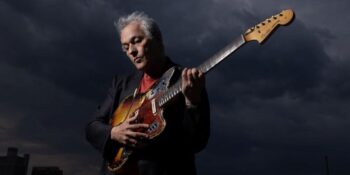
On Sunday, September 8th, renowned guitarist Marc Ribot will be appearing at the Riverside Revival in a duo performance featuring multi-instrumentalist Shahzad Ismaily and with special guest Buddy Miller. His appearance is part of a tour performing tracks from his 2018 release Songs of Resistance that have been “radically rearranged” plus “new material, improvisation, and whatever else reaps urgency.” Many of these tracks are blatantly and purposefully against Candidate Trump and the ideals of the Republican party. Importantly, Ribot’s work is politically and markedly informed by history.
For example, in 2018, famously reclusive Tom Waits leant his voice to Ribot’s version of “Bello Ciao” with an accompanying video featuring scenes of modern resistance. This song likely found its origins as a folk song in the rice fields of northern Italy where women of the lowest social class would carry out the extremely tiring work of caring for the young spring rice plants, spending the entire day in water two feet deep, barefoot, and bent over weeding the soil. The song, like the work, is purposefully slow, monotonous, gloomy and moving.
In the second half of the 20th century the song took on its modern shape and lyrics, embraced as a partisan hymn and dedicated to the partisans of the Italian resistance in World War Two. Since, the song has been recorded in nearly 50 different languages from Creole to Chinese, to Hungarian. Most recently, Mitski released a version on her youtube channel. As Mitski relates, the power of the song is in its direct, simple expression:
This is the flower of the partisanBella, ciao, bella, ciao, bella, ciaoThis is the flower of the partisanWho died for freedom.
This is just one of the selections from Songs of Resistance that Ribot will be performing on the 8th. Other tracks may include civil rights tunes, and other songs relevant the current political landscape but derived from history and tradition. Hopefully they’ll include, “Knock that Statue Down” (referring to recent events in Charlottesville) and “Rata de Dos Patas,” a Spanish denunciation of a certain politician and whose original singer’s name is withheld to avoid reprisals. If you agree with Ribot’s ideals, this concert promises to be politically inspiring, historically informative and emotionally stirring. Personally, I can’t wait. Tickets are still available here: https://www.riversiderevivalnashville.com/calendar/marc-ribot-songs-of-resistance-feat-shazad-ismaily-and-buddy-miller

